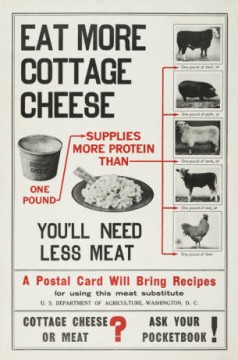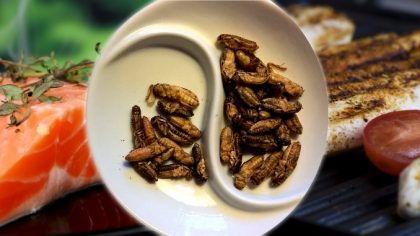
It’s obvious to everybody by now: eating right is a challenge – especially in this day and age.
Either you’re on one side of the spectrum and you have difficulty simply feeding yourself. Or you have all the money and options but, more often than not, make unhealthy choices. It’s so easy to do so! Not to mention tasty… Plus, it’s convenient! Fast food is everywhere! Not necessarily cheap… but who cares?
” I don’t have time nor the skills to cook for myself. ”
Does that sound like you? I know… it used to sound like me as well.
The good news is, you don’t need to be a chef to make something healthy to eat. Quite the opposite actually. Chefs are usually trained to make use of combinations of food that taste great and to cook meals that makes peoples’ taste buds rejoice.
That’s it!
Their business often has nothing to do with providing customers with the right nutrients or to keep them lean, fit and healthy. No. More often than not, chefs are there to make you salivate and stuff yourself with as much food as you possibly can. And have fun doing it.
Nourishment vs Unhealthy Food Choices
Preparing healthy food can be done quickly and easily. Basically, if you can boil something, you can make yourself healthy nutritious meals every day. You just have to be ready to say goodbye to your nutritive comfort zone. Of course, healthy food does not taste like what we are used to, especially in the west.
No additives or Monosodium Glutamate (MSG) means less tasty foods (that is until you get used to it). It can taste downright plain and boring when you’re used to going to restaurants and eat fast food but when you make the choice of eating to nourish yourself and not just for fun, you have to expect a phase of adaptation before eating healthy becomes normal to you.
So, for those looking for simple, efficient ways to get proper nourishment, there is still hope. You just have to hang in there. What I am going to do here is share some simple tips, ideas, recipes and principles I have developed and learned over the years and hope it can inspire some of you to raise your nutritional standards. It’s not as complicated as we were led to believe as you will soon see.
There is nothing more important than the way we nourish our bodies. Food is the fuel we need in order to go through the day and do what we have to do so that, by the time we go to bed at night, we feel satisfied and content about the progress we have made during the day. It is no wonder then, that how we eat and more importantly what we eat determines the potential we will have at our disposal to get things done.
We can have all the motivation in the world, but so long as we do not eat what we need to eat to get the essential and proper nutrients our bodies need, we will see our best efforts fail. The most important thing to remember is that eating right makes a difference. It’s not just about being trendy or different. Try just one healthy meal and you’ll feel the difference. Not only the body feels better but the mind also does because you know you’ve done something right for yourself. Do not expect to change all of your nutritional habits right away though. If you can accomplish that, good! But it’s more difficult than it seems on paper for most people. What we should always remember is that a little change is better than no change at all!
Alternative Sources of Protein
So here we go. First of all, if you want to be active, and stay active, you need protein. We are used to looking for it in meat and while this is indeed a good way to get your protein, there are alternatives that can be cheaper than buying meat because, let’s face it, good meat is expensive and not always necessarily easy to come by. What I’ll do here is talk about protein filled alternatives to meat. I’m not a vegetarian and have no intention of pushing a vegetarian agenda here but, in my opinion, it’s good to know that there are alternative routes to get that much needed protein
1. Lentils

First of all – lentils.
Cheap, tasty and filled with protein. They are a versatile staple to keep in your arsenal. You can use them in soups as well as serve them on a plate with vegetables and even meat to get a double dose of the good stuff!
Red lentils for example usually contain about 24 grams of protein for every 125ml of them. That’s 48 grams of protein for a full cup of red lentils my friends!
To give you an idea, the protein shake I drink after every work-out, which is designed to give your resting muscles a much needed dose of protein, contains 23 grams of protein per cup. So you see now how powerful red lentils are. Not to mention that lentils are also a very good source of fiber.
2. Adzuki Beans
Next one in line are Adzuki beans.
Usually red with a small white stripe, they also come in white, black and gray varieties. One should soak them for about 8 hours before boiling them for just under an hour.
Once again, these little beauties are a great source of protein. They provide a good 20 grams of protein for half a cup. That means 40 full grams in a whole cup! Awesome!
I like them a lot because not only do they look good on a plate mixed with green vegetables ( I usually get the red variety ) but also love their wholesome taste. Nothing fills you up and gives you energy to push your physical boundaries like beans.
3. Black Beans
Another one I really love are Black beans. Everybody knows them. They look about the same as Adzuki beans, they have same size and they also have this little white stripe on them, but they sport a nice black color instead. These beans provide 21 grams of protein for half a cup. I’ll let you do the math for a full cup this time ;-).
They also contain more fiber than Adzuki beans: 60% versus 50%. Once again, these little beans give you the strength to move mountains and can be used in a variety of ways, one of which, the ”black bean brownie” is a favorite of mine. Here’s a link for that wonderful and useful recipe. Once more, these should be soaked for about 8 hours and then boiled for one before enjoying them.
4. Cottage Cheese!

Last but not least is cottage cheese! – I know there are countless other alternatives to meat out there but I have to restrain myself here. I used to be kind of reticent about trying this item. I had seen people eat it and always thought it looked odd and even gross until I decided to try it. Now I’m a fan!
This kind of cheese contains a very low amount of fat (which is good news) but it’s also a very good source of protein. My cottage cheese container here says it contains 16 grams of protein for a half a cup. It may seem a bit underwhelming to you after reading the previous alternatives I’ve mentioned, but keep in mind that’s 32 grams for a full cup! That’s a lot of protein! Not to mention that cottage cheese can be used in an almost infinite variety of ways. What I often do these days is boil myself some red lentils (remember, these are the best) and then, when they are ready, I mix in some cottage cheese and add some fresh herbs like parsley or even basil. Simple, efficient, tasty not to mention healthy! Perfect for high performance activities. You can also use some of that cottage cheese in smoothies or simply scoop up a small portion and add it to your plate alongside some green vegetables and beans for an extra protein boost. It looks good, it feels good and it tastes good!
Advice on Changing Eating Habits
Don’t hesitate to hit me up with some questions or comments. I’ll be happy to reply. Keep in mind that these alternatives are not only cheaper than meat, but they also contain as much if not more protein than meat does! And although I do recommend one or two portions of meat every week, I have spent almost five years as a vegetarian (from 2007 to late 2011) and so it is in no way impossible to have a healthy and active lifestyle and thrive without meat, especially when the worldwide food markets make it increasingly difficult to find some quality meat (not to mention any type of food really) so if you cannot find meat that is lean, organically and locally raised, I recommend that you stay away from it until you do. Health is no joke, if you don’t have it, you don’t have anything my friends! The best strategy here is to always keep some lentils or beans handy in the fridge. Boil them in advance so you always have some handy when you need it. Cold, they can be used to make a salad or you can warm them up in the oven with vegetables and herbs. That way, while your meal is getting ready, you can use the free time for other things!
As I’ve mentioned earlier, it may be difficult to change nutritional habits for the better. Bad food often is the most tasty and so, making the transition can be discouraging when you are used to food that’s very tasty and move on to food that, while tasty in it’s own natural way, does nothing compared to what is sold in restaurants and stores all over the world. What I recommend to make your healthy meals tastier is get some fresh herbs like basil, cilantro and parsley. Don’t be afraid to use them! Not only will they add a lot of flavor to your food but they will also increase it’s nutritional value. Salt is always a valuable option too, although one should beware of using too much. I recommend getting non-processed organic salt or even using some varieties of pepper to add some punch to your meals.
So here you go!
Stay active! Stay healthy, until next time!



